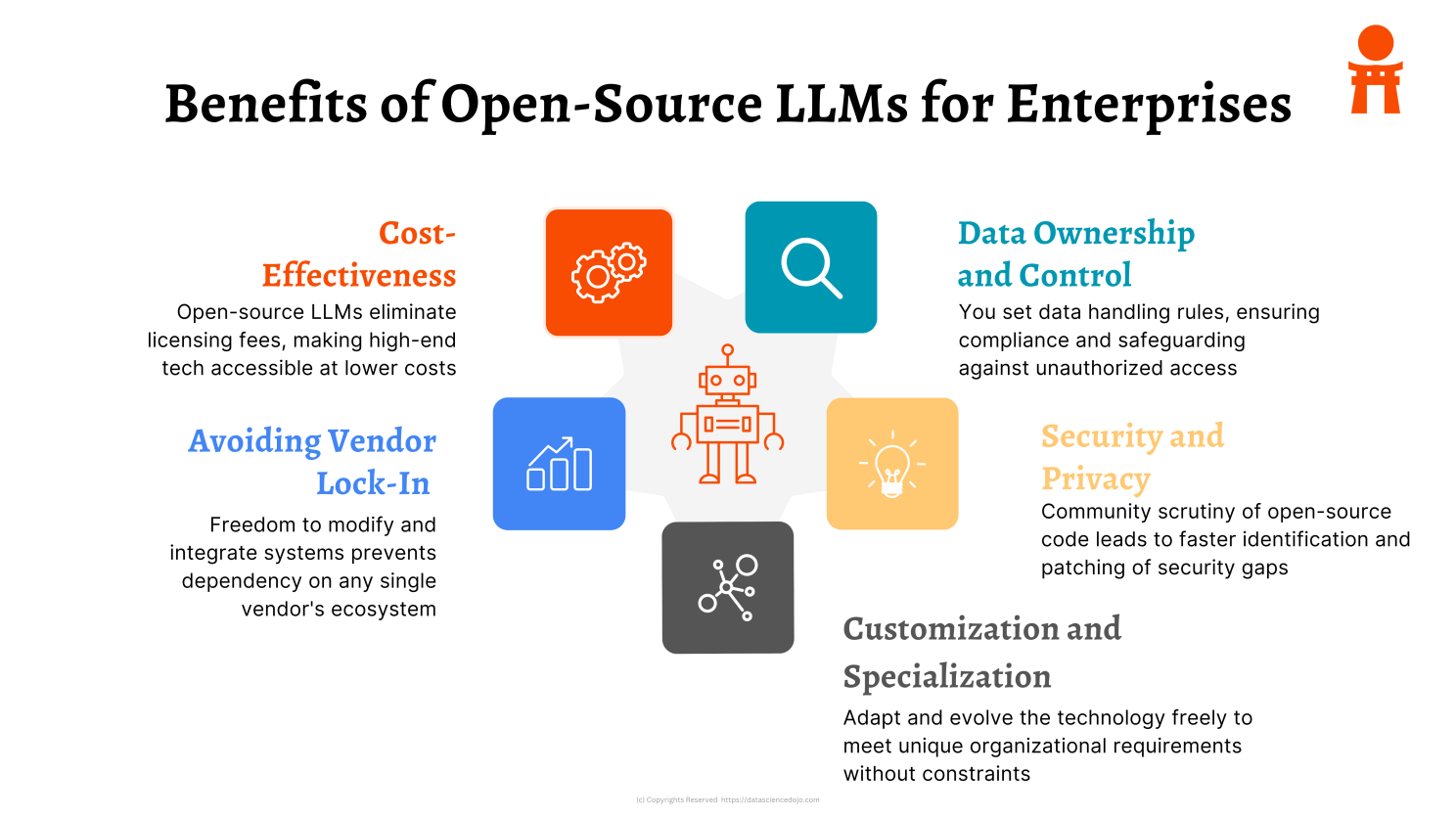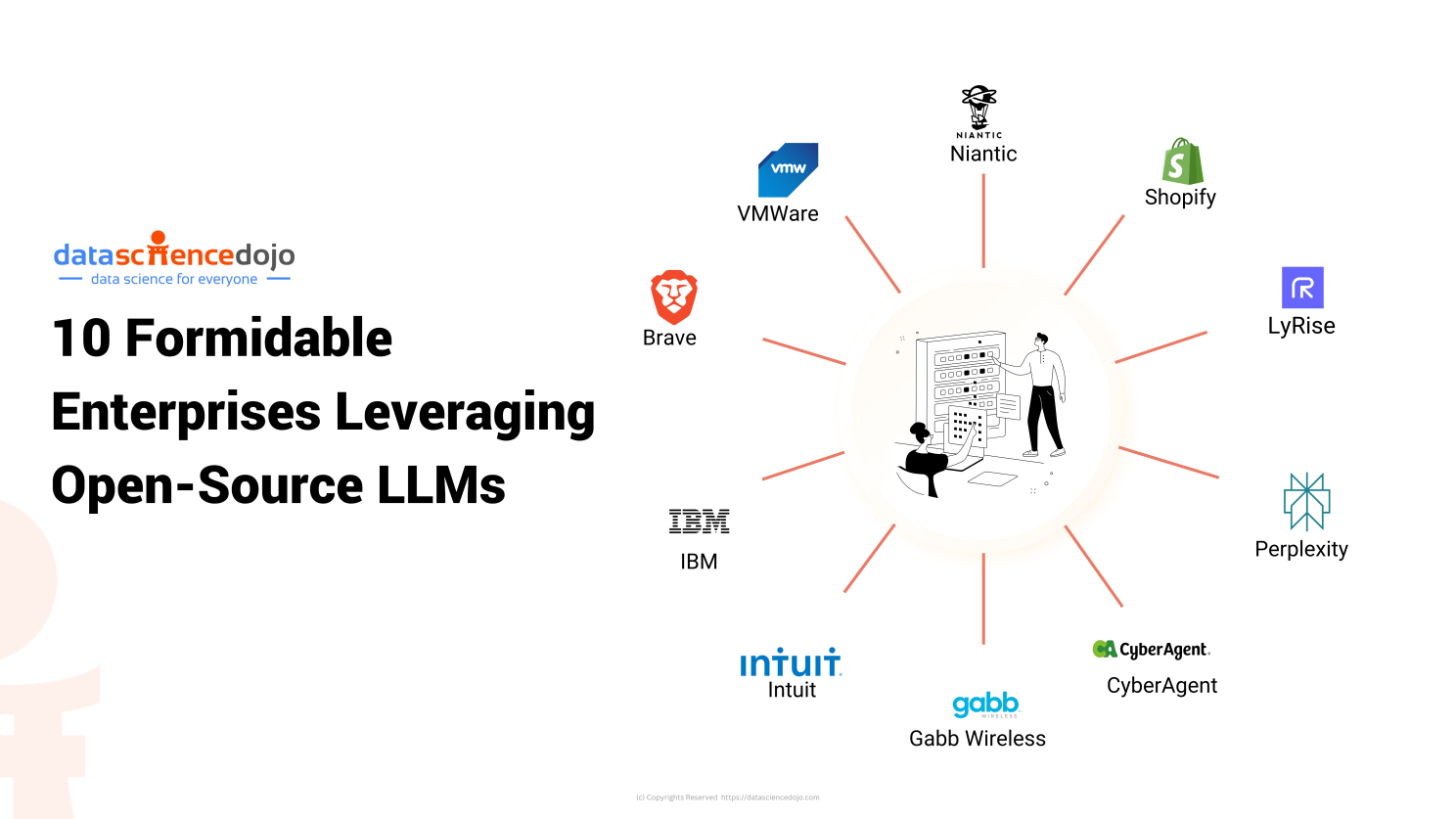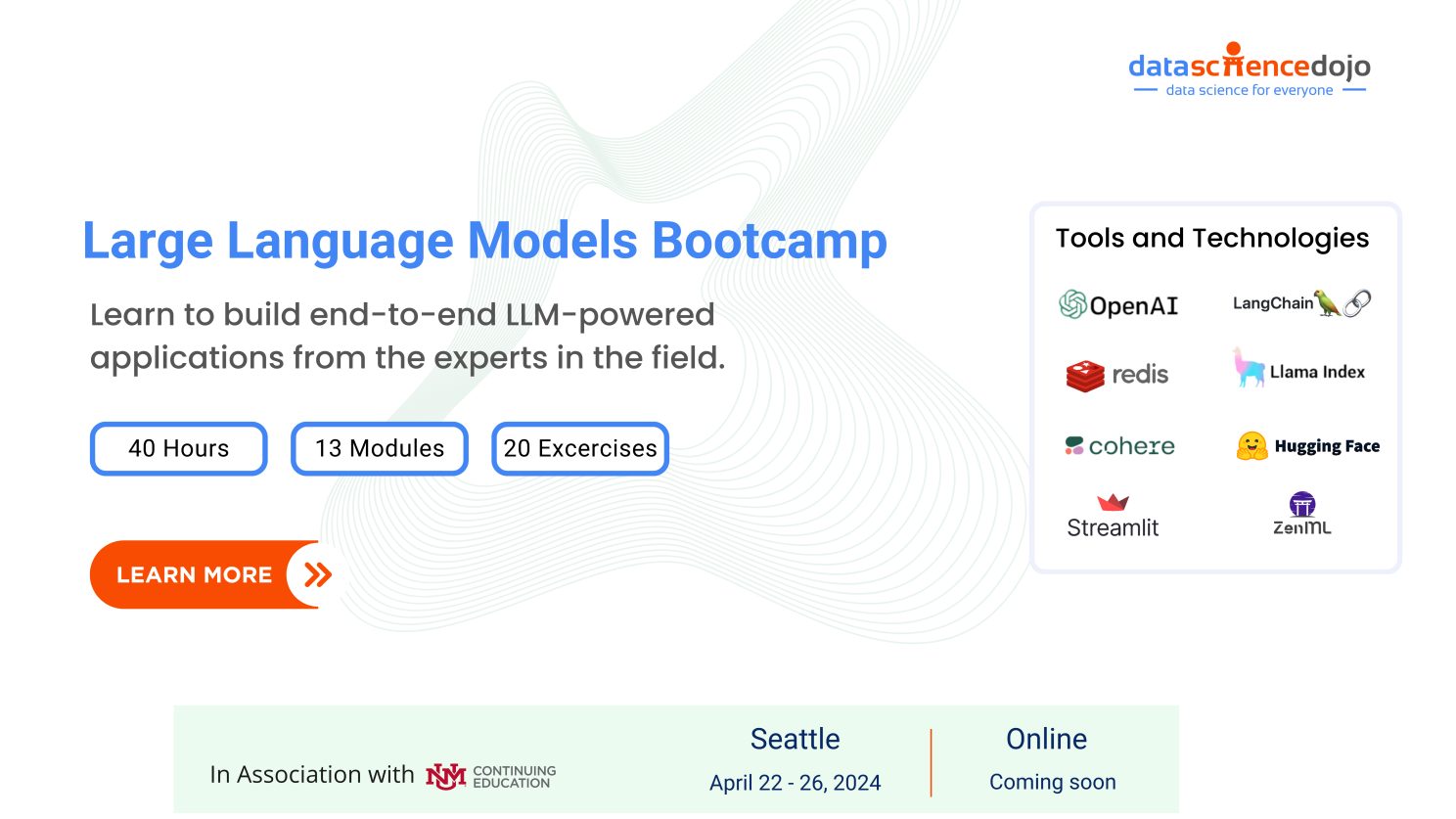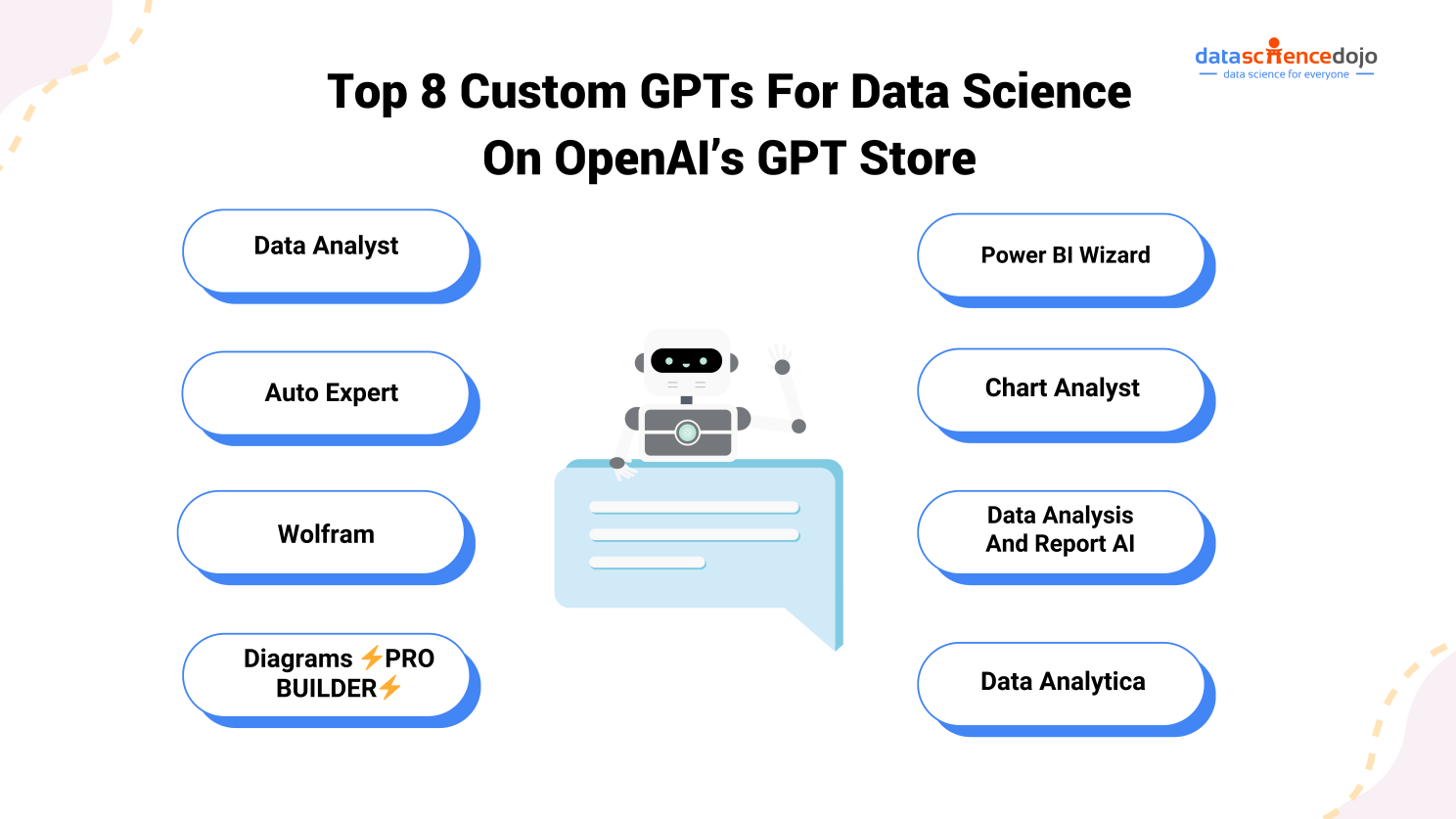Welcome to Data Science Dojo’s weekly newsletter, “The Data-Driven Dispatch”.
We’re always chasing more, aren’t we? A constant struggle to achieve greatness while somehow investing less of ourselves. But really, how much more is out there for us to grab?
Let’s picture a scenario: A company worth a billion dollars, run by just one person. Sounds like a dream, right? A lot of gain with hardly any pain.

But can one really pull that off?
Well, it turns out, yes. With the advent of large language models, this isn’t longer a pipe dream. These LLMs are changing the game, allowing businesses to achieve more with far less. That’s why you see companies left and right, scrambling to get their hands on LLMs.
However, what remains an important question for everyone is what sort of LLMs should these companies implement. Should we go for closed-source LLMs or swing the doors wide open with open-source options? It’s a rigorous discussion, with each side wanting to achieve the most with the least cost and risks.
In this dispatch, we’ll explore the rise of publically available LLMs, and what they have to offer to enterprises.

The Steady Shift of Enterprises from Close-Source LLMs to Open-Source LLMs
Since the release of OpenAI’s ChatGPT, their proprietary LLMs like GPT-4 and Anthropic’s Claude gained momentum. Companies were rushing to get their hands on these models to implement them for different tasks.
But soon, these companies realized that closed source models while having several benefits, lacked in a lot of areas. Here are two major ones:
- Data Security: Companies fear that closed-source-model-providers do not keep their proprietary data secure and use it for training their own models.
- Company Data Integration: An important question companies started asking is why are we paying for a super large model that knows very little about our business. Usually, proprietary model providers integrate an enterprise’s data using RAG pipelines. However, RAG isn’t always reliable.
Conversely, companies can use quite efficient smaller open-source language models that could aptly implement the same information retrieval workflow. A win-win on the grounds of both cost and efficiency right?
Explore how closed-source models compare with publically available ones.

Read more: Open source LLMs vs. closed source LLMs: Inspecting from the lens of enterprise adaptation
Benefits of Open-Source LLMs
Open-source LLMs are not only proving to be very helpful for organizations from numerous facets, but they are also the source of innovation and democratization of AI across the world, beyond the barriers and glass ceilings.
Take, for example, a recent project in India where a startup built a Kannada-language chatbot using a publically available LLM. This highlights the global reach and impact of these models, empowering enterprises of all types, and not a certain group.
Here are some benefits of publically available LLMs for organizations.

Read more: Open-Source LLMs For Enterprises: Benefits, Use-Cases, And Challenges
How are Different Enterprises Already Leveraging Open-Source LLMs?
The adaption of open-source LLMs currently is lower than that of closed-source largely because open language models were late in the show. The first major open LLM was LLaMA by Meta, which was released 3 months after the launch of ChatGPT.
Now, as time passes, we are seeing powerful publically available models like Mistral AI‘s Mixtral of Experts model, which is currently topping the leaderboards. This indicates that it’s only a matter of time before open LLMs steal the spotlight.
Here’s how different formidable companies are leveraging open-source LLMs.


How Important Is It To Open-Source AI?
Here’s a great discussion featuring Yann LeCun, one of the most esteemed personalities in the field of AI. In this talk, he discusses the importance of open-source language models.
He believes that making AI available to everyone is as crucial as having free and open media. This is because it helps stop a few big companies from controlling too much information.
To connect with LLM and Data Science Professionals, join our discord server now!

When asked about your job at the next party, try out this response! It’s the perfect icebreaker to get the tech crowd laughing… or plotting your exit!


Learn How to Leverage Large Language Models for Your Enterprise
According to McKinsey, Generative AI is going to increase workplace productivity by as much as 70%. So, it’s important to understand how LLMs work and find the best ways to use them in your organization.
Data Science Dojo pioneer in providing comprehensive Large Language Models Bootcamp. It’s a 40-hour intensive ride to learn how to build LLM-powered apps.

Get on a call with an advisor now!
Best GPTs on GPT Store for Data Science Tasks
Here are some GPTs that data scientists can use in their everyday work lives to tackle complex data-related tasks.

Explore: Top 8 Custom GPTs for Data Science on OpenAI’s GPT Store

🔴 Finally, here are some top new stories in AI for the week:
- Nvidia Reports 265% Yearly Revenue Surge to $22.1 Billion, Driven by AI Demand, Overtaking Tesla as Most-Traded Stock with Market Cap Hitting $1.67 Trillion. Read more
- Stable Diffusion Launches Early Preview for Stable Diffusion 3, Elevating Text-to-Image Quality with Early Access Waitlist Open. Read more
- Google Introduces New Open-Source Models, Gemma 2B and 7B, Aiming to Compete with Meta and Mistral Without Revealing Performance Benchmarks Yet. Read more
- Elon Musk’s Neuralink Achieves Significant Milestone with Brain Technology Enabling Patient to Control Computer Mouse Through Thoughts. Read more
- Google Apologizes for AI Image-Generator Flaws, Halts Gemini’s People Images Amid Diversity Overcompensation Concerns. Read more
- Huawei Redirects Efforts from Smartphone Chip Production to AI Chip Manufacturing in Response to Surging Demand and US Export Limitations. Read more


